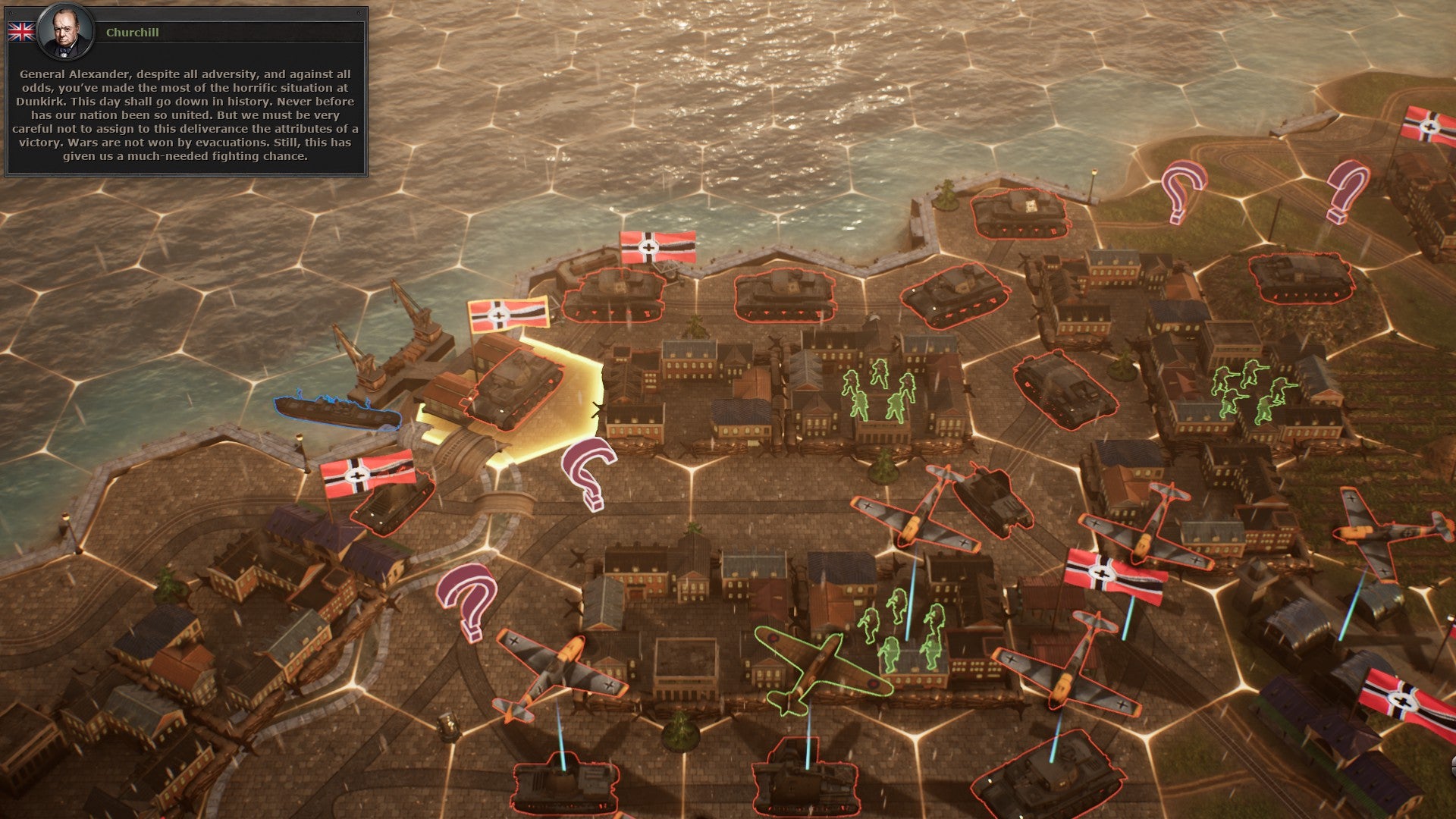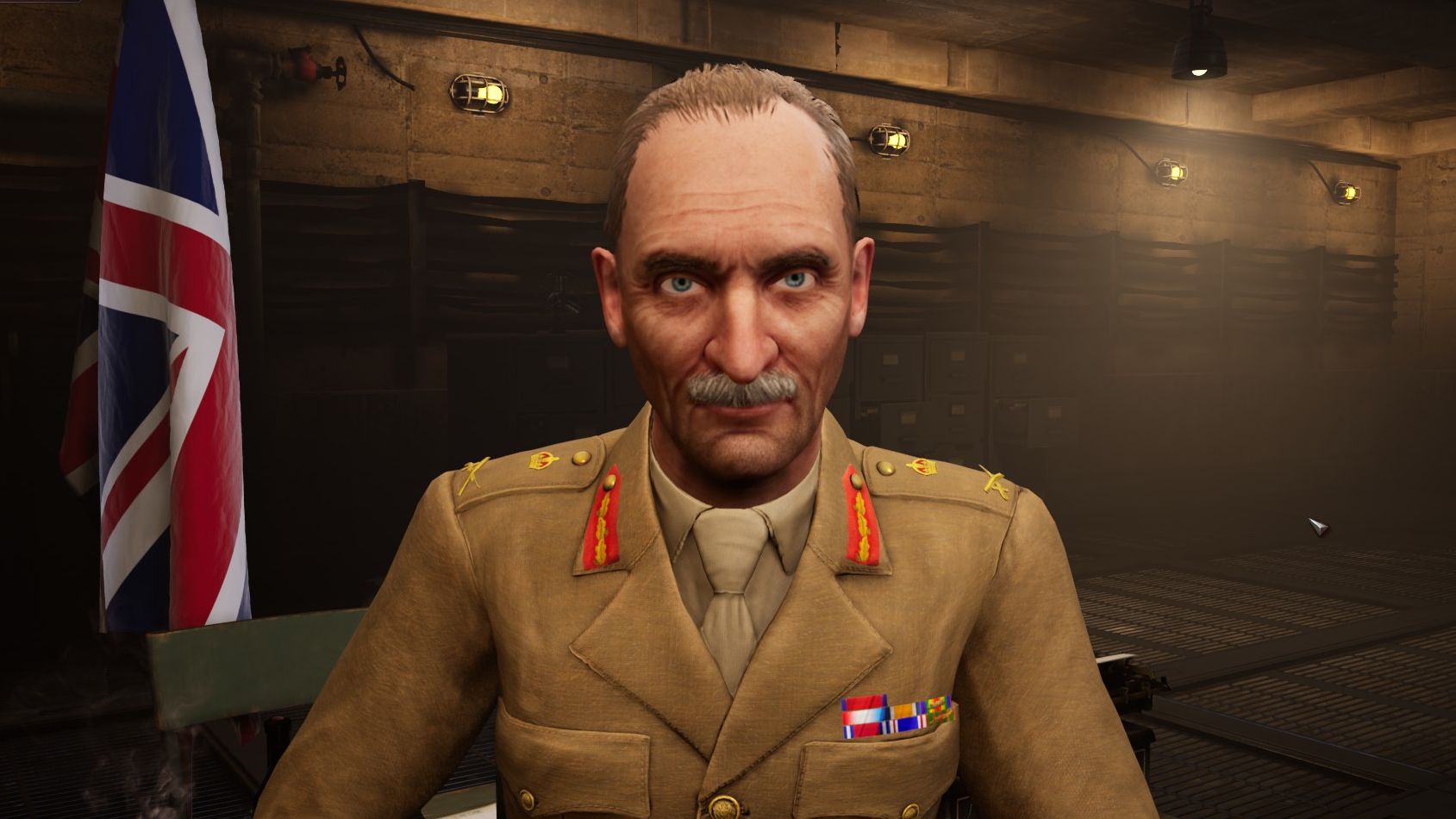Products You May Like
Kiev-based studio Starni Games have been knocking out the Strategic Mind series since 2019. From a slightly rocky start with The Pacific (rockier still if you count 2018’s Panzer Strategy) they’ve hit their stride with Fight For Freedom, an entry showing off the American and British led chapters of the Great War reboot.
The Western front is frankly overdone in any media, not just games, and I’ll admit I was hesitant. How many times have you run around Normandy with tanks and paratroopers? How many Cockneys and Ohio farmboys have you heard yelling about bunkers and stukas, versus exactly zero Australians or Kenyans or the literally millions of Indian soldiers propping us up? I’m not even talking about this in a political sense. It’s just, yknow, it’s been done. I’ve probably left more tank debris in France than the entire US Army.
I gripe, but I’m talking about Fight For Freedom because I’ve had a great time with it anyway.
We do at least get some of the more fluctuant early war operations, when nobody was entirely prepared. This is the British campaign, a story of slightly flailing efforts to hold back German invasions, and subsequent humiliating defeats we’ve since decided mean we’re better at war than France even though the ocean did all our real fighting. Dunkirk is a good level though.
The other campaign is the American one, although I should point out that both quite rightly include allied forces from nations like Belgium and France. They’re a huge help in fact, with the Norwegian navy putting in a particularly gung ho performance in an early British mission. The story is more or less (sometimes ‘less’ enough to lean slightly into alternative history, but hey ho) the beach-to-Berlin romp you expect, but it is at least based on the strategic support element more than raw heroics or miserable attritional slogs starring A Weary Actor.
They’re good budget fun, both in story and structure. I’m emphatically not going to use the word “janky” here. It’s not one of those. RPS has traditionally been prone to enthusing about loveable but slightly broken games, particularly ones from Eastern Europe, and I’m perhaps more guilty of it than most. But if you’re weary of those kinds of recommendations you can relax, because FFF is solid enough to skirt around that minefield.

It helps that its fundamental design is based on the classic Panzer General. You command a series of operations in a storied campaign, during which your set of “core” units stays with you from level to level, gaining experience for any damage done (some unit types gain XP for more appropriate activities; recon buggies for example, who improve more for inducing surrenders and thus gathering intel on enemy positions) until they’re ready to level up and gain your choice of bonus skill. Supplementing that are non-core units you borrow for free, though you’re penalised somewhat if you lose too many.
Securing objectives gets you victory points, to spend on recruiting new units, firing special munitions like incendiary artillery shells, or hullbusting torpedoes for divebombers. You can usually summon a fresh core unit like this at any time, and most refreshingly, any unit adjacent to an active supply point can be re-equipped on the fly, filling up special slots with extra weapons and utilities, or sliding a lorry under infantry or artillery to give them more range (in exchange for extra vulnerability if they’re caught while driving). Any equipment you return is fully refunded, and even non-core units politely give it all back at the end of a mission.
While a game like Shadow Empire is all about the big picture and planning years of infrastructure and military buildup, Strategic Mind’s unit and equipment system gives it an air of flexibility that feels particularly suitable for these big invasion and evacuation campaigns where tactical mobility is king. Those gurkhas took the port but now their anti-infantry gear is redundant? No problem! Hand in those machine guns and give them some bazookas so they can help fend off the incoming tank counter-attack. It even makes naval combat work, often my least favourite element of a wargame (all water is the same and so are all boats. Also boats and ships are the same thing. Do not @ me), and though they tend to be mostly an opening phase while you land troops, I even enjoyed those parts. Their guns sound excellently hefty, and they have a special modular damage system that makes fighting with and against them more specialised without becoming overly complicated.
“It even makes naval combat work, often my least favourite element of a wargame (all water is the same and so are all boats.)”
Success in missions grants another resource, command points, particularly with specific side objectives. The latter tend to be somewhat politically or diplomatically inspired, i.e. you’re helping out allies by securing a town that’s not strategically necessary, or rescuing stranded units. Sometimes you’ll instead get access to a bonus unit or equipment. Command points represent your esteem with politicians or other generals back home, and effectively lend you more ability to authorise options like airstrikes or reconnaissance flights, but this system also serves some narrative purpose too.
It’s here where I think Fight For Freedom won me over. Its battles do what you’d expect – recon reveals units, artillery suppresses and dislodges, airstrikes kill artillery, anti-air kills bombers, infantry excel in cities and forests, Sin that’s a tank gun you fool it can’t handle that kind of heat – it’s all good, and I could go into it but it feels sort of redundant. It’s the narrative that gives it the personality I think is lacking so many World War 2: The Globening games. You see the war from the perspective of a named general, who mostly bickers and ponders strategic situations with other generals and one or two politicians.

The guts and horror aspect are gone, but rather than a dry grand strategy piece about nations, it’s about some guys trying to do a complicated job without getting everything blown up. There are hints of the influence of diplomacy and politics, but it’s not a nationalism drama, nor is it very jingoistic despite the presence of many famous historical warmongers. It’s understated, and even keeps out of the way most of the time. There’s some pre-mission cut scenes and occasional radio conversations when you trigger a mission variable, but that’s about it. It’s exactly enough.
It outlines the drama without overextending what is obviously a limited budget. And the voice acting is… look, I honestly like it. If you can’t do an impression of Winston Churchill, don’t embarrass yourself by trying, just act the part and the lines without worrying about the accent or sounding alike. So the English generals have strange mixed accents. So what? The translation’s good and they speak it well without biting off too much. I’m tempted to say they’re proving a meta point about using limited resources well, but now I’m getting carried away.
It does have some shortcomings, naturally. The series as a whole definitely feels iterative, and though the individual entries are definitely improving, the UI still gives rise to some issues. Everything’s laid out pretty well, but selecting a unit means clicking directly on its model, which can be trickier than it sounds when everyone’s clustered together, as I’m told is the fashion in war. I’ll often accidentally select a bomber instead of the tiny tank gun occupying the same hex, sometimes only realising when I accidentally send it cone-first into an AA gun. This is compounded by the most maddeningly commonplace, horrible, very bad, why why why design flaw I see in modern turn-based games: the lack of an order confirmation option. In its defence, SM does have an ‘undo move’ button, but that only works for move orders, and even then only the uneventful ones that don’t change the tactical situation any.

It’s also impossible to have most units move by degrees, but I’m willing to grudgingly accept that here, as discrete movement is a key ability of recon units, and a limited move system could be defended as a simulation of how the chain of command works – I’m ordering units to run for specific locations remotely, not directly controlling their actions. They’re too obedient for their own good, maybe. More fiddly is the way enemy turns work; the turns are calculated very quickly, but then each move is played out, and the only way to skip is to repeatedly click the mouse button once for every move and attack. It responds instantly – the engine seems robust in that regard for sure – but it is fairly annoying even if missions are typically only 20 turns or so, since you’ll probably have sight of dozens of units, especially if allies are involved.
The camera is also prone to bad habits. During your own movements, it will sometimes switch from your aerial view to a close up shot of a movement or attack, which is a harmless and sometimes neat bonus. But during AI turns it likes to zoom about and sometimes gets stuck showing you very little of what’s actually going on. There are just a few gremlins here and there. Perhaps these will be patchable, but it’s still disappointing to see after several entries in a series. The absence of any alternative game modes is more glaring still, and I’m surprised to see a somewhat modular game release with no custom battles, or at least a handful of skirmish maps.
Ultimately though, I found myself wanting to write about this one very quickly. It’s not too simplistic, it’s not too demanding or overwhelming. It’s not super fancy nor is it car boot sale level low fi. It goes right down the middle in a way that’s exactly what you need to while away an hour or two per mission. It feels a bit odd to spell it out, but once in a while I can recommend a game without extorting its magnificence, or a reason it’s particularly fascinating. I just like Fight For Freedom, and if Starni can up their game a little more, this is a series that could become special.
